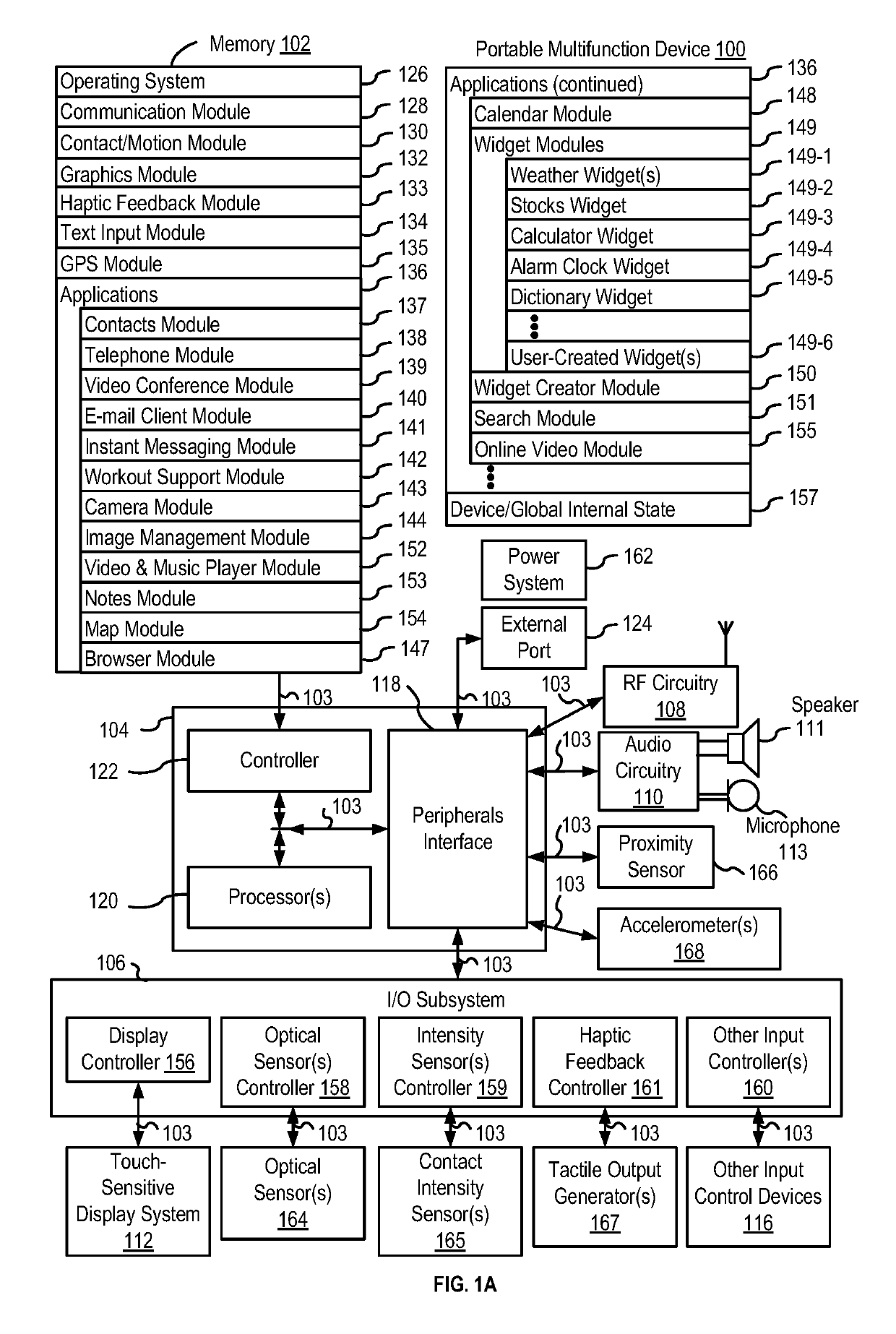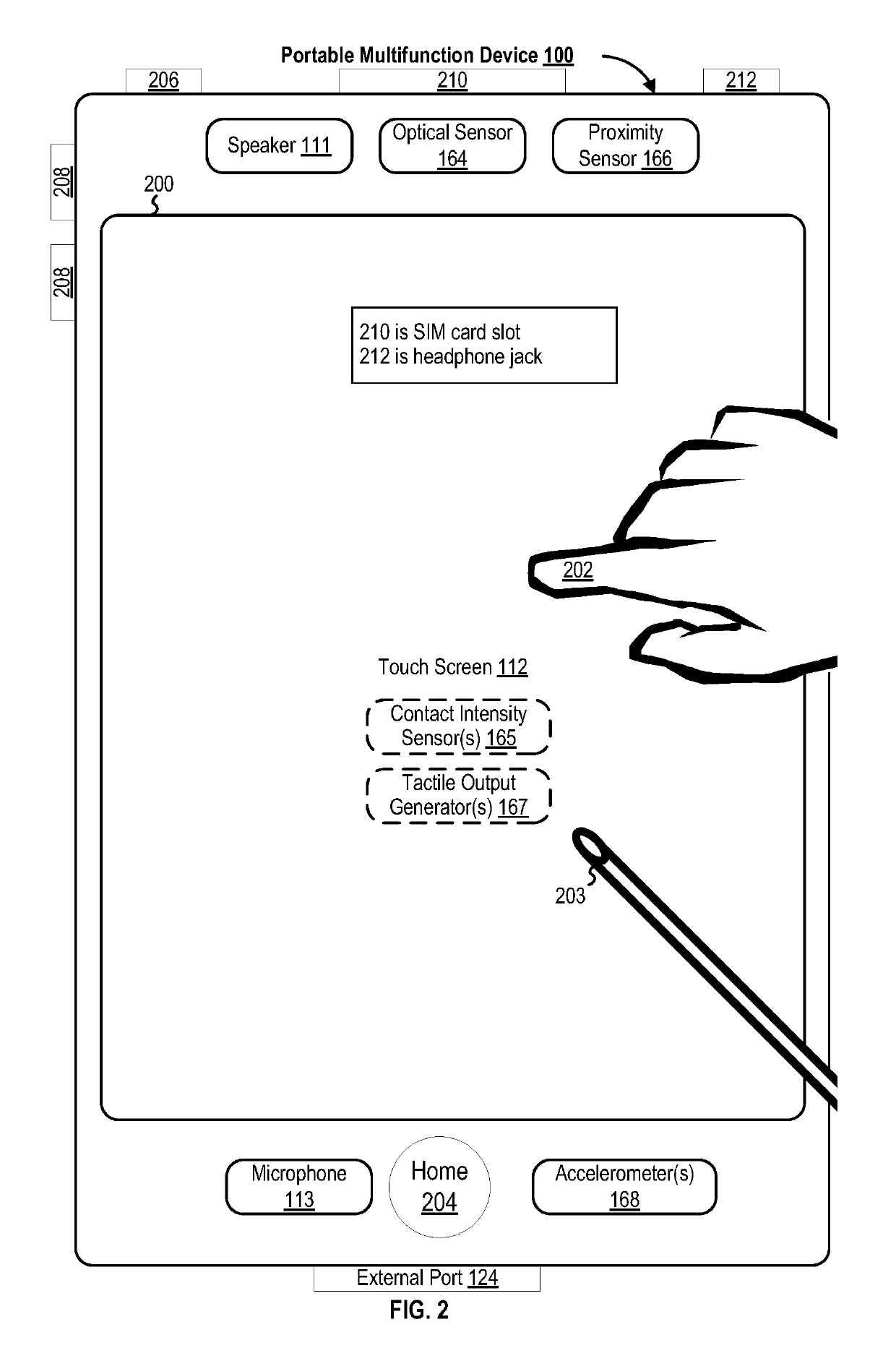Emoji word sense disambiguation
a technology of emoji and semantic meaning, applied in the field of emoji prediction, can solve the problems of prediction and suggestion of ideograms, unsophisticated and inaccurate conventional deterministic approaches to predict relevant ideograms, etc., to improve the accuracy and robustness of emoji character prediction, accurately disambiguating the semantic meaning of the respective word, and improving the interpretation of natural language input
- Summary
- Abstract
- Description
- Claims
- Application Information
AI Technical Summary
Benefits of technology
Problems solved by technology
Method used
Image
Examples
example d
[0031]Regarding Example D, conventional text prediction solutions may be unable to utilize the context immediately prior to the trigger word “present” to disambiguate its intended semantic meaning. However, the EWSD techniques described herein can exploit more distant prior context (e.g., based on the phrase “past and future”) to determine the intended semantic meaning of the trigger word and recognize that the ideogram “” should not be suggested for the text input of
[0032]As described in greater detail below, EWSD is performed by taking the context of the text input into account using bi-directional long short-term memory (LSTM) recurrent neural networks (RNN). The use of bi-directional RNNs (bi-directional LSTM networks) is particularly desirable because it has the ability to encapsulate the entire context available in the text input, rather than only the context within a small sliding window centered around each potential trigger word. This approach therefore makes emoji predicti...
PUM
 Login to View More
Login to View More Abstract
Description
Claims
Application Information
 Login to View More
Login to View More - R&D
- Intellectual Property
- Life Sciences
- Materials
- Tech Scout
- Unparalleled Data Quality
- Higher Quality Content
- 60% Fewer Hallucinations
Browse by: Latest US Patents, China's latest patents, Technical Efficacy Thesaurus, Application Domain, Technology Topic, Popular Technical Reports.
© 2025 PatSnap. All rights reserved.Legal|Privacy policy|Modern Slavery Act Transparency Statement|Sitemap|About US| Contact US: help@patsnap.com



